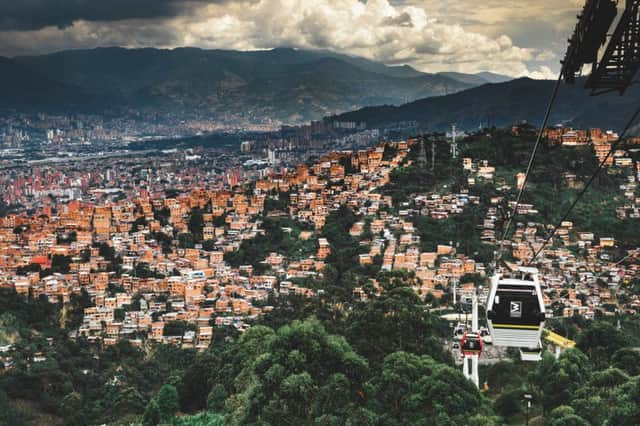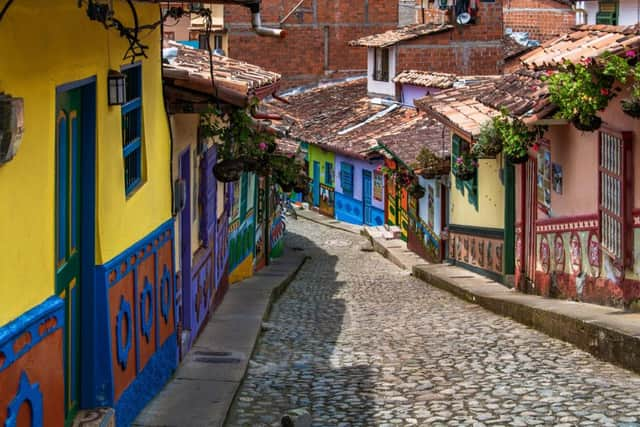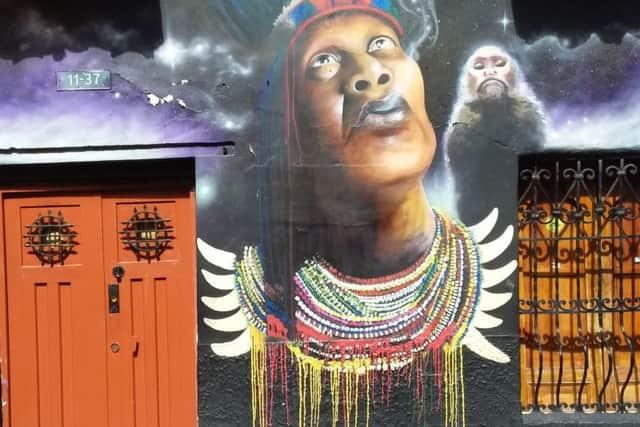Colombia, Scotland on Sunday travel


Attractions in the capital, Bogotá, come in the form of designer accommodation like the W Hotel with its toothpaste-white bedrooms; exotic restaurants like Leo where the unlikeliest of indigenous ingredients (caiman, pirarucu, ants) find their way on to your plate; colonial-era buildings in the colourful La Candelaria neighbourhood; mesmerising displays in the Gold Museum of what enticed conquistadors to the country; and, a short drive outside the city, a cloud forest park, Chicaque, with a walking trail that starts at 2,700m and descends past giant-leaved cecropia trees to 500m.
The biggest surprise comes with a visit to the city of Medellin, ex-murder capital of the world, reborn into a welcoming metropolis with vibrant street art. The sculptures that grace Medellin’s Plaza Botero were gifted by the artist to his home town, as were his paintings that fill nearby Museo de Antioquia. Colombia’s museum shops are a reliable source of art and craft merchandise and this one is no exception.
Advertisement
Hide AdAdvertisement
Hide AdWhen morning mists clear, Medellin’s dramatic location in a deep valley reveals itself and the must-do experience is a visit to the city’s highest barrio, La Sierra. Local guide Milena kicks off her unique tour with a metro ride and then an ascent by tram and cable car before boarding a bus to a hilltop neighbourhood which has reshaped itself through self-help into a model community. Milena’s narrative of what was once a dangerous, no-go area becomes a micro-history of Colombia’s renaissance.


Liveable Medellin is an easy city to explore. A good restaurant, like Cook’s in the Four Points Sheraton, has a menu diverse enough to suit most travellers, while El Herbario, situated inside a converted warehouse, integrates spices and herbs with Colombian ingredients to tasty effect. Renting an apartment for a short stay makes an appealing alternative to hotel rooms and Apartahotel Loma Verde, where I stayed, was larger than my flat back home.
Colombia occupies less than one per cent of the world’s landmass but is home to 20 per cent of the planet’s bird species and seeing some of them is possible in regions that were once combat zones. It took me an hour to fly from Medellin to the city of Cali in the southwest of the country, and the centrally located Hilton by Hampton hotel; then I hit the road to the Pacific coast for 18km and stopped at El Paraiso de los Colibries (the Paradise of Hummingbirds) to be entranced by dazzling bird life. A small, informal restaurant run by an Argentinian in a clearing with feeding boxes brings the humming birds and tanagers almost to your table. It’s a hypnotic experience, even for serious twitchers who come here with lists to tick off the endemic and vulnerable multicoloured tanager: yellow face, black patches bordered by chestnut, emerald green wings, bright blue underparts.
Colombia Birdwatch has its new, purpose-built lodge close by, in a region once controlled by rebel group FARC and now completely safe.
The resplendent bird life is not a one-off in a country crazily addicted to displays of colour. Colombia’s flag, the national soccer team’s outfit, traditional basket weaving, Botero’s paintings, polychromatic public art – graffiti is an inadequate term – exhibit an exuberance of spirit that can also be heard in cumbia, the country’s traditional music. Cumbia blends indigenous and Spanish music with African beats; its origins are thought to lie in a courtship dance among slaves brought across the Atlantic – but talk of dance in Colombia, especially in Cali, can only mean salsa. Colour and salsa come together in the giant mural that covers the dance floor of Topa Tolondra, one of the many salsa clubs that dominate night life in Cali. It’s fantastic to watch and there is no obligation to join in or wear a spangled dress. The next step is a visit to one of the many dance schools where tourists are as welcome as other sashaying beginners.


Colombia’s music is as mixed as the people’s DNA. When the Spanish arrived in 1509, there was a flourishing population of indigenous people and nowadays nearly half of all Colombians are classified as mestizo (mixed race). The Spanish brought slaves from Africa to work the sugar plantations and Afro-Colombians make up 10 per cent of the population.
The blend of ethnicities is nowhere more dynamically present than along the sizzlingly hot (rarely below 30 degrees) Caribbean coast in the north of the country. Cartagena is the entry point, as it was for the Spanish slave ships, and the old city enclosed by 17th-century walls has become Colombia’s tourist epicentre. The drawbacks of this are predictable enough but the colonial architecture and cobbled streets are charmingly manicured and a sophisticated tourist infrastructure makes Cartagena a comfortable base for exploring the 1,600-km coastline.
Cartagena has the best hotels outside of the capital, like Charleston Santa Teresa, with a rooftop pool and bar that were never there when it was a Carmelite convent. There are attractive B&Bs and guesthouses like the boutique Casa Marta, while to really punish the plastic, Isla Pelicano is a private island open for day visits and overnight stays. Gourmet restaurants within the walled city – Donjuan is one of the best – are surprisingly affordable.
Advertisement
Hide AdAdvertisement
Hide AdFernando Botero said that some things are improbable but not impossible, and the radical transformation of his country from being a synonym for drug-related mayhem to a land of magical realism bears out his dictum. Colombia’s violent image is old hat, belonging in the dustbin of history, and tourists are pouring in to see what was out of bounds for so long.